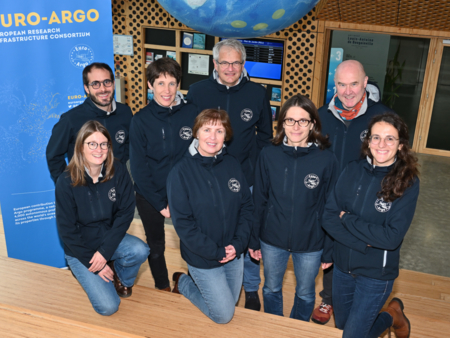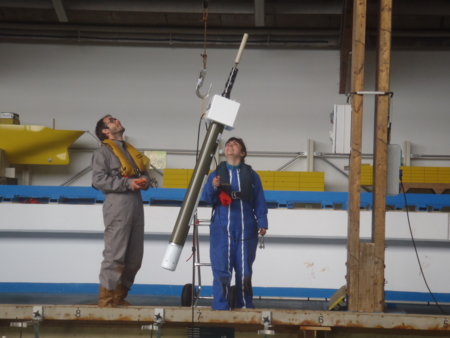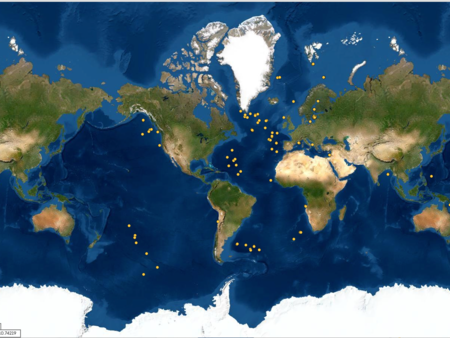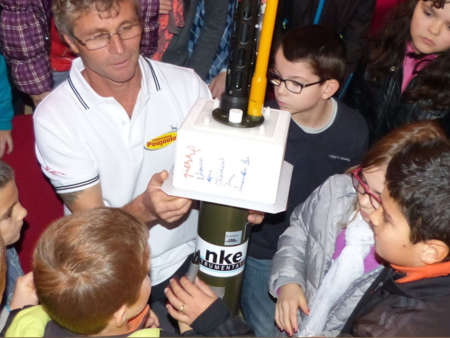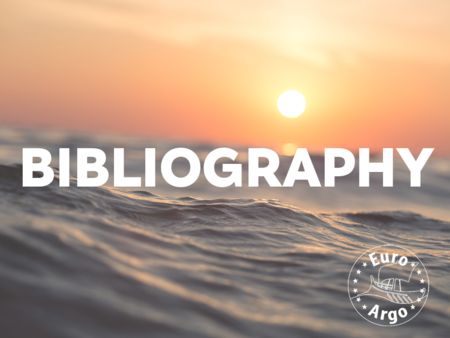Argo activities in the Black Sea
Contributors: S. Balan1, B. Fach2, S. Grayek3, P-.M. Poulain4, E. Stanev3, A. Storto5.
1 GeoEcoMar, Romania
2 Middle East Technical University (METU), Turkey
3 Helmholtz-Zentrum Geesthacht, Germany
4 Istituto Nazionale di Oceanografia e di Geofisica Sperimentale (OGS), Italy
5 Euro-Mediterranean Centre for Climate Change (CMCC), Italy
The Black Sea
The Black Sea is a region of particular interest, as it is rather sensitive to climate and anthropogenic influences. It is a deep sea with maximal depth of 2200 m (Figure 1). The Black Sea receives drainage from almost one third of the continental Europe. It is virtually isolated and hence a vulnerable water basin with 87% of its volume affected by anoxia.
History
Argo measurements in the Black Sea started with the operations of 7 [T/S] (temperature/salinity) floats deployed in 2002-2006 as part of a collaboration between the Institute of Marine Sciences of the Middle Eastern Technical University (METU-IMS, Turkey) and the University of Washington (USA). Then Germany deployed 2 [T/S + DO (Dissolved Oxygen)] floats in 2009 and France deployed 2 [T/S] floats in 2009-2010. Bulgaria, boosted by the Euro-Argo Preparatory Phase project, deployed 4 floats in 2011-2013. A review of first diagnosis from Argo floats in the Black Sea is available here.
Italy is committed to deploy floats in the Black Sea since 2012. In total, 10 Italian floats have been deployed, including one float upgraded to measure simultaneously nitrate and sulfide concentrations in addition to temperature and salinity. Turkey deployed 4 floats [T/S + DO] in 2013-2014 (DEKOSIM, Turkish Centre for Marine Ecosystems and Climate Research), and the following floats were deployed as part of EU projects: 2 Biogeochemical (BGC) floats (E-AIMS) in 2013, 1 BGC float and 2 floats [T/S + DO] (PERSEUS) in 2014-2015, 3 [T/S] floats (MOCCA) in 2016 (see “recent deployments” below).
So, since 2002 a total of 37 floats have been deployed in the Black Sea, 11 units were still active at the end of January 2017. All floats have cycles of 5 days and parking depths between 200 and 1000 m. Most floats have alternated maximal profiling depths of 700 and 1500 m. Except for the two German floats, all floats have been deployed by teams from the Institute of Oceanology – Bulgarian Academy of Science (IOBAS, Bulgaria), METU (Turkey) and GeoEcoMar (Romania).
The coordination of float deployments is conducted by the Med-ARC (MedArgo) since 2009. The Delayed Mode Quality Control (DMQC) of the Black Sea is also performed by MedArgo at OGS. This activity started in 2016.
Recent deployments
In December 2016, a DG-MARE MOCCA Argo float was deployed in the south-western Black Sea during a DEKOSIM cruise (Figure 2) aiming at elucidating water mass transport from the north-western shelf and its nutrient dynamics along the southern Black Sea coast as well as biochemical measurements along the oxic-anoxic interface.
DEKOSIM at METU-IMS is a leading climate-related research centre in Turkey, known for its ability to carry out maritime observations, such as important physical, chemical and biological parameters (currents, waves, salinity, temperature, nutrients, chlorophyll, oxygen, etc.) its technical expertise in model development and established cooperation with the public and private decision making bodies. As part of the observation system one mooring station with oceanographic and meteorological sensors was installed in the Eastern Mediterranean Sea and one will be installed in the Black Sea. Continuous measurements are obtained from Argo floats released in the Black and Mediterranean Seas.
Two other MOCCA floats were deployed in the Black Sea in late 2016, one from the Romanian cruise on the R/V Mare Nigrum (Figure 4) and another one by a team from IOBAS (Bulgaria).
Black Sea Monitoring and Forecasting
The Copernicus Marine Environment Monitoring Service (CMEMS) Black Sea Monitoring and Forecasting Center (BS-MFC) operates daily analysis and forecasts on the Black Sea, along with an ocean reanalysis system, covering at the moment the 2005-2015 period. In this context, observations from Argo floats are routinely ingested in the real-time data assimilation system that implements a variational scheme to estimate the optimal initial conditions for the forecasts, produced at a horizontal resolution of approximately 3 km. Argo data are also used for producing verification skill scores in order to monitor the accuracy of the system. Meanwhile, Argo data are ingested in the ocean physical reanalysis system.
Argo floats represent the main observing network capable to sample sub-surface temperature and salinity variations in the Black Sea during the last decade. A few Argo in the Black Sea provide measurements at exceptionally high vertical resolution (up to thousands of records in the first 100 m), requiring sub-sampling of the profiles for consistency with the data assimilation system.

